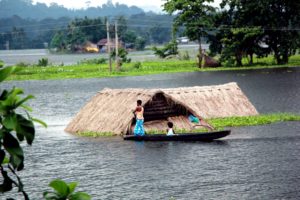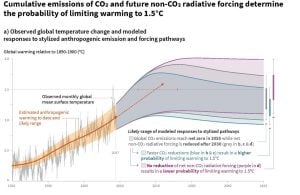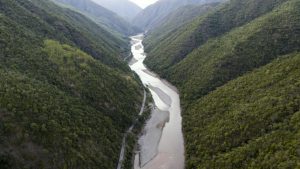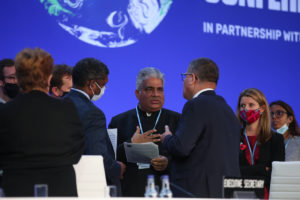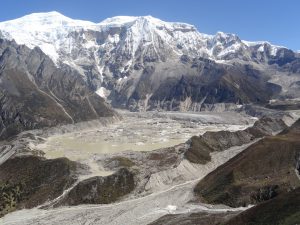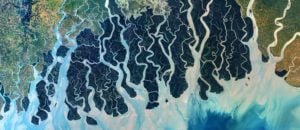Adaptation to climate change impacts will become impossible unless greenhouse gas (GHG) emissions are controlled far better, and this must be done by 2030. The stark warning from scientists in 67 countries around the world came as the Intergovernmental Panel on Climate Change (IPCC) launched the second part of its assessment report (AR6).
The first part of the report – launched last year – looked at the science of climate change. This second part looks at impacts, adaptation and vulnerability. A third will consider how to reduce GHG emissions and remove from the atmosphere the gases now warming the earth. Its launch is scheduled in a few weeks.
The new part of the AR6 report was launched on 28 February after two weeks of bitter wrangling between the authors and governments of 195 countries. Many governments – especially those dependent on coal, oil and gas – disputed many of the findings. The agreed-upon summary for policymakers said, “Human-induced climate change, including more frequent and intense extreme events, has caused widespread adverse impacts and related losses and damages to nature and people, beyond natural climate variability.”
“The rise in weather and climate extremes has led to some irreversible impacts as natural and human systems are pushed beyond their ability to adapt.”Intergovernmental Panel on Climate Change
The starkest finding by the experts was: “The rise in weather and climate extremes has led to some irreversible impacts as natural and human systems are pushed beyond their ability to adapt.”
These include increased heat-related human mortality, warm-water coral bleaching and mortality, and increased drought-related tree loss. Increases in areas burned by wildfires are due to climate change in some regions. Adverse impacts from tropical cyclones, with related losses and damages, have increased due to sea level rise and the increase in heavy precipitation. Impacts on natural and human systems from slow-onset processes such as ocean acidification, sea level rise or regional decreases in precipitation have also been attributed to human-induced climate change.
“This report is a dire warning about the consequences of inaction,” said Hoesung Lee, chair of the IPCC. “It shows that climate change is a grave and mounting threat to our wellbeing and a healthy planet. Our actions today will shape how people adapt and nature responds to increasing climate risks.”
Rawshan Begum Ara of Bangladesh, lead author of the report’s first chapter, told a special briefing of journalists, “Adaptation cannot succeed without mitigation.” Ara, now at Macquarie University, drew attention to climate hazards, vulnerability and exposure.
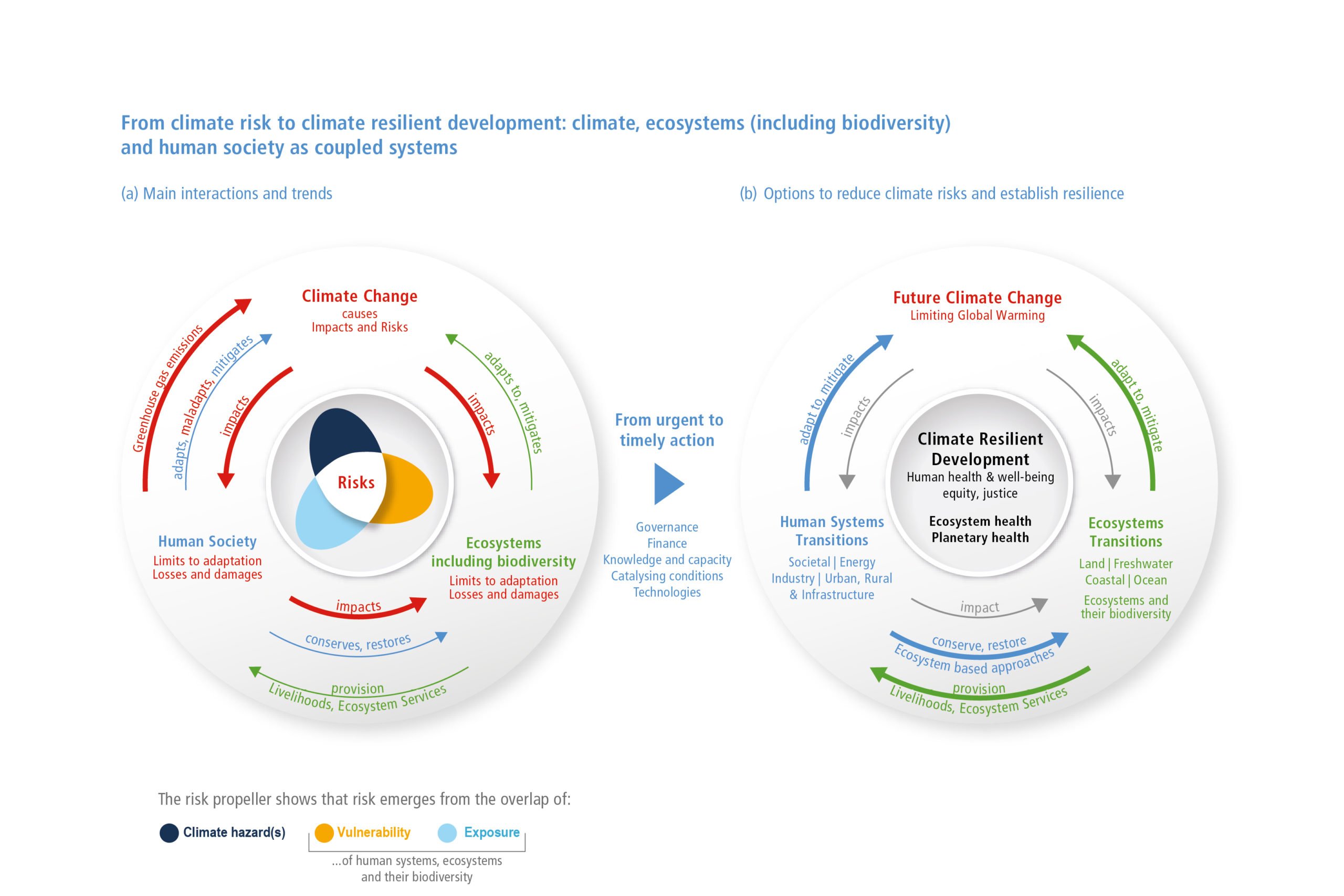
Climate change impacts everywhere, on everyone
The impacts are on all forms of life. The experts found that about half the species they studied have shifted towards the poles or to higher elevations, or both. Hundreds of local losses of species have been driven by increases in heat extremes, as well as mass mortality events on land and in the ocean. Some losses are already irreversible, such as the first species extinctions driven by climate change. Other impacts are approaching irreversibility such as the those of hydrological changes resulting from the retreat of glaciers, or the changes in some mountain and Arctic ecosystems driven by permafrost thaw.
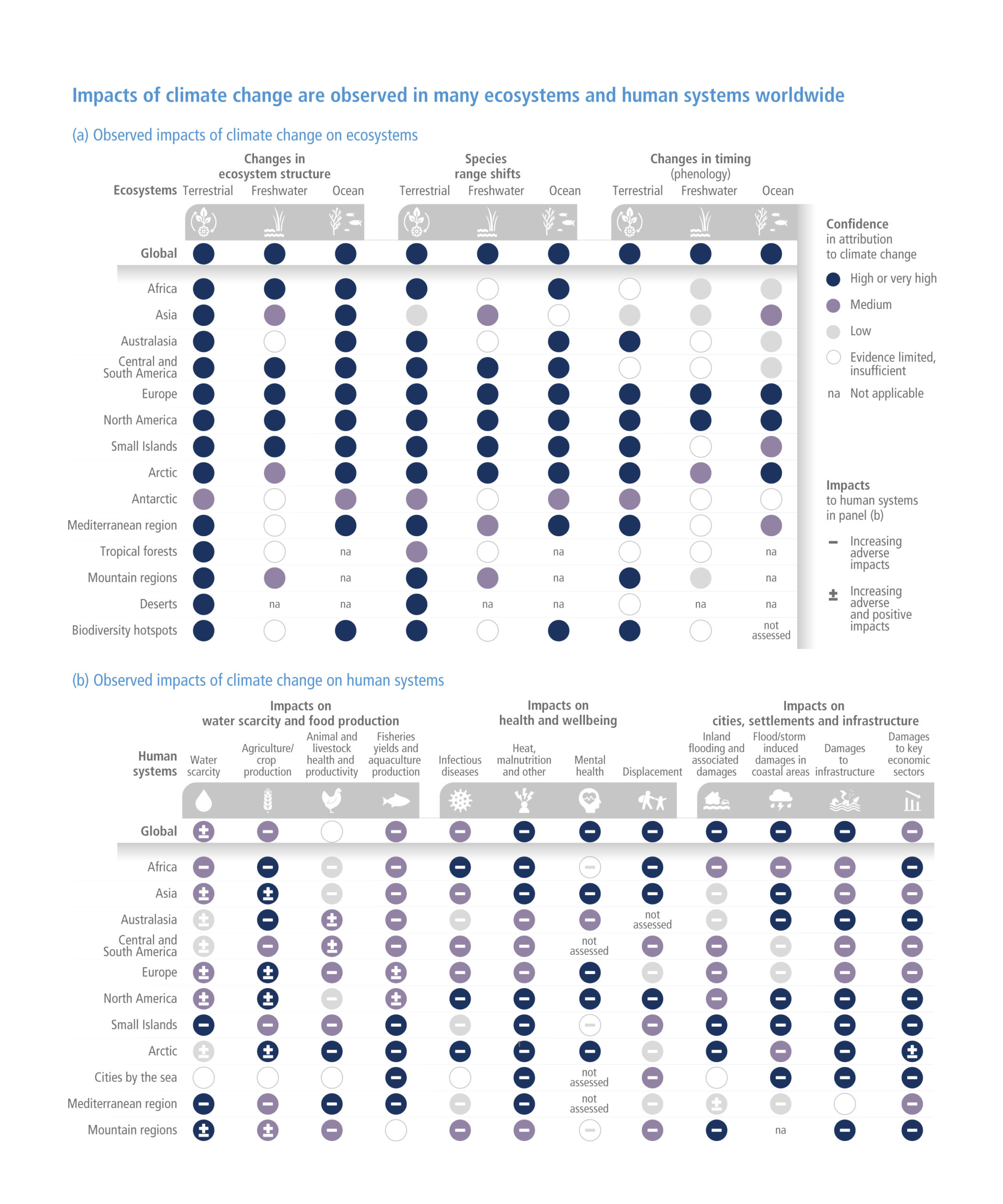
Climate change has reduced food and water security, hindering efforts to meet the UN Sustainable Development Goals. Although overall agricultural productivity has increased, climate change has slowed this growth over the past 50 years. Ocean warming and ocean acidification have adversely affected food production from shellfish aquaculture and fisheries in some oceanic regions. Increasing weather and climate extreme events have exposed millions of people to acute food insecurity and reduced water security.
Sudden losses of food production and access to food compounded by decreased diet diversity have increased malnutrition in many communities, especially for indigenous peoples, small-scale food producers and low-income households. Children, the elderly and pregnant women are particularly impacted. Roughly half of the world’s population currently experiences severe water scarcity for at least some part of the year.
Climate change has adversely affected the physical and mental health of people. Extreme heat events have resulted in human mortality and morbidity. The occurrence of climate-related food-borne and water-borne diseases has increased. The incidence of vector-borne diseases has increased, including from range expansion. Animal and human diseases, including zoonoses (those jumping from animal to human hosts), are emerging in new areas. Increased exposure to wildfire smoke, atmospheric dust, and aeroallergens have been associated with climate-sensitive cardiovascular and respiratory distress. Health services have been disrupted by extreme events such as floods.
Some extreme weather events, such as tropical cyclones, have reduced economic growth in the short-term. Non-climatic factors including some patterns of settlement and siting of infrastructure have contributed to the exposure of more assets to extreme climate hazards increasing the magnitude of losses. Individual livelihoods have been affected through changes in agricultural productivity, impact on human health and food security, destruction of homes and infrastructure, and loss of property and income, with adverse effects on gender and social equity.
Some adaptation actions have negatively affected gender relations – we have to take gender issues much more seriouslyAnjal Prakash, Indian School of Business
Anjal Prakash of the Hyderabad-based Indian School of Business and a lead author of the report’s chapter on cities, settlements, and key infrastructure, said at the briefing: “Some adaptation actions have negatively affected gender relations – we have to take gender issues much more seriously.”
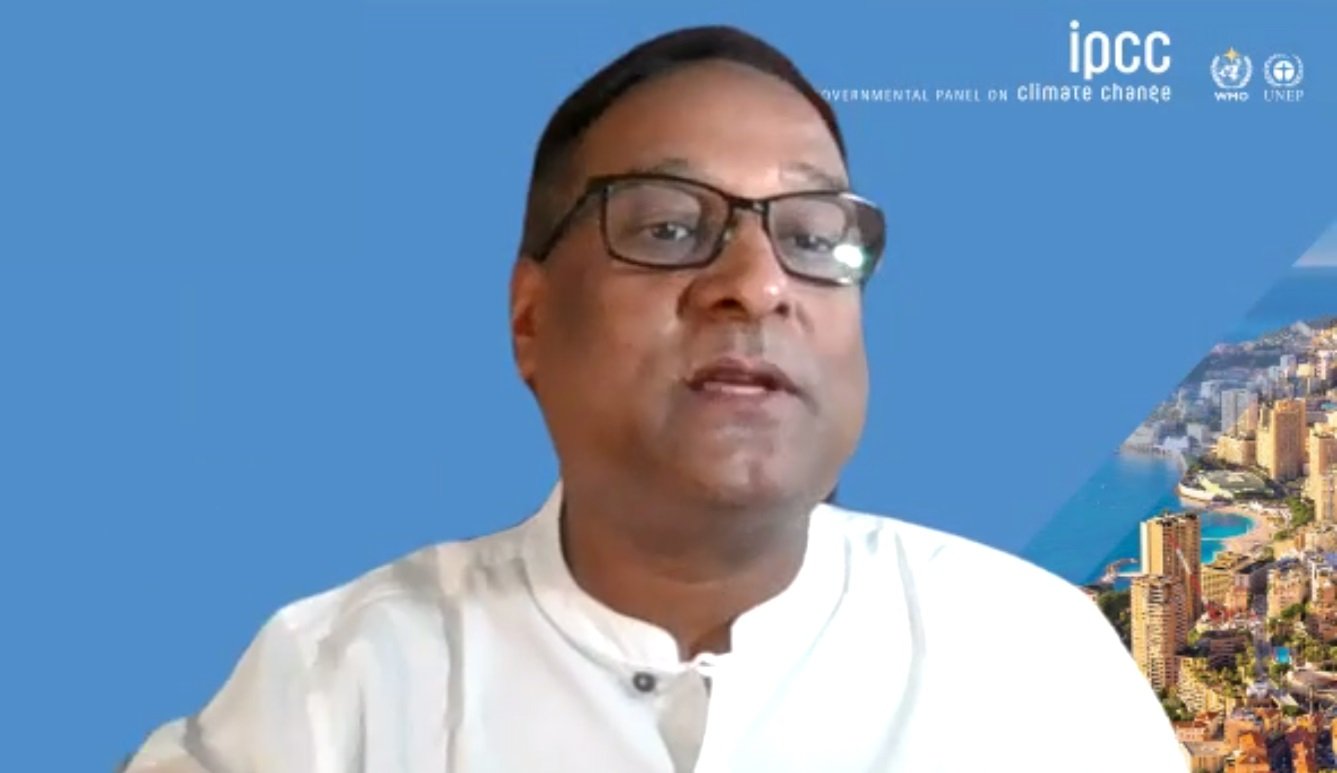
Displacement and involuntary migration from extreme weather and climate events has generated and perpetuated vulnerability. Vulnerability of ecosystems and people to climate change differs substantially among and within regions, driven by patterns of intersecting socioeconomic development, unsustainable ocean and land use, historical and ongoing patterns of inequity such as colonialism, and governance. Approximately 3.3 to 3.6 billion people live in contexts that are highly vulnerable to climate change.
Chandni Singh of the Bangalore-based Indian Institute of Human Settlements (IIHS) and a lead author of the report’s Asia chapter said at the briefing that this was the first time that effects of colonialism and extractive modes of development had been considered by the IPCC. “It’s a tremendous win for IPCC authors because it’s a political topic – we’ve shown there’s scientific consensus on that.”
The experts confirmed that unsustainable land use and land cover change, unsustainable use of natural resources, deforestation, loss of biodiversity and pollution adversely affect the capacities of ecosystems, societies, communities and individuals to adapt to climate change. Loss of ecosystems and their services has cascading and long-term impacts on people globally, especially for indigenous peoples and local communities who are directly dependent on ecosystems to meet basic needs.
Projected climate change, combined with non-climatic drivers, will cause loss and degradation of much of the world’s forests, coral reefs, and low-lying coastal wetlands.
Between 2010 and 2020, human mortality from floods, droughts and storms was 15 times higher in highly vulnerable regions, compared to regions with very low vulnerability
Regions and communities facing considerable development constraints are highly vulnerable to climatic hazards. Global hotspots of high human vulnerability are found particularly in West, Central, and East Africa, South Asia, Central and South America, small island states, and the Arctic. Between 2010 and 2020, human mortality from floods, droughts and storms was 15 times higher in highly vulnerable regions, compared to regions with very low vulnerability.
A bleak future
Key infrastructure systems including sanitation, water, health, transport, communications, and energy will be increasingly vulnerable if design standards do not account for changing climate conditions. Between 2041 and 2060, risks in physical water availability and water-related hazards will continue to increase, with greater risk at higher global warming levels.
2°C
At approximately 2°C global warming, snowmelt water availability for irrigation is projected to decline in some snowmelt dependent river basins by up to 20%, and global glacier mass loss of 18 ± 13% is projected to diminish water availability for agriculture, hydropower, and human settlements in the mid- to long-term, with these changes projected to double with 4°C global warming.
In the mid- to long-term, displacement will increase with intensification of heavy precipitation and associated flooding, tropical cyclones, drought, and sea level rise. At progressive levels of warming, involuntary migration from regions with high exposure and low adaptive capacity would occur.
Climate change impacts and risks are becoming increasingly complex and more difficult to manage. Multiple climate hazards will occur simultaneously, and multiple climatic and non-climatic risks will interact, resulting in compounding overall risk and risks cascading across sectors and regions. Some responses to climate change result in new impacts and risks.
If global warming exceeds 1.5°C even temporarily, many human and natural systems will face additional severe risks, the experts have warned. “Depending on the magnitude and duration of overshoot, some impacts will cause release of additional greenhouse gases, and some will be irreversible, even if global warming is reduced.”
Uneven adaptation
There is overall progress in adaptation planning and implementation, but it is unevenly distributed and there are gaps.
Chandni Singh said, “There is a danger that some adaptations are near-term and focus on single risks. The question is how much the risks are being reduced by this adaptation.”

The report said inclusive, integrated, and long-term planning at local, municipal, sub-national, and national scales, together with effective regulation and monitoring systems accompanied by financial and technological resources foster urban and rural system transition. Effective partnerships between governments, civil society, and private sector organisations across scales provide infrastructure and services in ways that enhance the adaptive capacity of vulnerable people.
Limits to adaptation
Some limits to adaptation have been reached but this can be overcome by addressing a range of financial, governance, institutional, and policy related constraints. Financial constraints are important determinants of limits to adaptation. Although climate finance has shown an upward trend, current global financial flows for adaptation, including from public and private finance sources, are insufficient. They limit the implementation of adaptation options, especially in developing countries. It does not help that the overwhelming majority of climate finance was targeted to mitigation.
Adaptation finance has come predominantly from public sources. Adverse climate impacts can reduce the availability of financial resources by incurring losses and damages and through impeding national economic growth, thereby further increasing financial constraints for adaptation, particularly for developing and least developed countries.
There will be loss and damage
Adaptation does not prevent all losses and damages, which are unequally distributed across systems, regions and sectors and are not comprehensively addressed by current financial, governance and institutional arrangements, particularly in vulnerable developing countries. With increasing global warming, losses and damages increase and become increasingly difficult to avoid, while strongly concentrated among the poorest vulnerable populations.
And there is maladaptation, which can lock-in long-term negative effects. Chandni Singh said, “Even when you’re adapting, you may have unintended consequences on people, ecosystems, equity. An example is building a sea wall to handle sea level rise, which can adversely impact communities further along the coast.”
Climate resilient development is possible
There is a rapidly narrowing window of opportunity to enable climate resilient development, which is progressively constrained by every increment of warming, in particular beyond 1.5°C.
Climate resilient development is enabled when governments, civil society and the private sector make inclusive development choices that prioritise risk reduction, equity, and justice. Decision-making processes, finance and actions need to be integrated across governance levels, sectors and timeframes. Climate resilient development is facilitated by international cooperation and by governments at all levels working with communities, civil society, educational bodies, scientific, and other institutions, media, investors and businesses. In particular they need to develop partnerships with traditionally marginalised groups. These partnerships are most effective when supported by enabling political leadership, institutions, resources, including finance, as well as climate services, information and decision support tools.
In the cities
With over half the human population already living in urban areas, the report has taken a special look at cities. The experts found that climate change has already impacted human health, livelihoods, and key infrastructure. The impacts are concentrated amongst the economically and socially marginalised urban residents, mostly in informal settlements.
Anjal Prakash said, “Urban India is at much greater risk; there has been 35% urban growth in 2015-20. There will be 600 million more Indians in urban India in the next 15 years.”
The report says interactions between changing urban form, exposure, and vulnerability can create climate change-induced risks and losses for cities and settlements. However, the global trend of urbanisation also offers a critical opportunity in the near-term, to advance climate resilient development.
Integrated, inclusive planning and investment in everyday decision-making about urban infrastructure, including social, ecological and grey/physical infrastructures, can significantly increase the adaptive capacity of urban and rural settlements. Equitable outcomes contribute to multiple benefits for health and well-being and ecosystem services.
Coastal cities and settlements play an especially important role in advancing climate resilient development. Prakash said Mumbai, Chennai, Kolkata, Visakhapatnam, Puri, Goa were especially vulnerable to sea level rise.
“Together, growing urbanisation and climate change create complex risks, especially for those cities that already experience poorly planned urban growth, high levels of poverty and unemployment, and a lack of basic services,” Debra Roberts, co-chair of IPCC working group II, said at the launch. The current report has been prepared by this working group.
“But cities also provide opportunities for climate action – green buildings, reliable supplies of clean water and renewable energy, and sustainable transport systems that connect urban and rural areas can all lead to a more inclusive, fairer society.”
Prakash said some Indian cities such as Surat, Bhubaneswar and Indore were doing well by integrating climate risk modelling in city planning. However, Singh pointed out that moving from planning to implementation is the first problem. “Indore looks at water, what about heat, what about other things?” She said the Bangladesh Delta Plan 2100 is good example of long-term adaptation planning. “We can’t do single risk focussed adaptation. We need a combination of adaptations. Telangana has made it mandatory. The initial steps are being taken but we’re not there yet.”
Mountains are particularly vulnerable
The IPCC has identified mountains as particularly vulnerable to climate change impacts. Prakash – one of the authors of the chapter on mountains – said the Hindu Kush Himalayas were likely to see more disasters like the floods in Chamoli region of Uttarakhand last year. “The water of 10 major rivers that flow down from the Hindu Kush Himalayas is changing – 1.3 billion people in Asia are directly affected.”
Singh pointed out that malaria and dengue spreads are changing at higher warming levels, especially towards higher altitudes in the Himalayas.
Climate change and biodiversity – the close link
Safeguarding biodiversity and ecosystems is fundamental to climate resilient development, considering the threats climate change poses to them and their roles in adaptation and mitigation. Maintaining the resilience of biodiversity and ecosystem services at a global scale depends on effective and equitable conservation of approximately 30-50% of Earth’s land, freshwater and ocean areas.
Investing in nature alone won’t be enough. To secure a healthy, liveable planet for everyone, we need to transform our way of life fundamentally, especially key elements such as our industry and energy sector as well as how cities and infrastructures are planned and built.
Healthy ecosystems are more resilient to climate change and provide life-critical services such as food and clean waterHans-Otto Pörtner
If temperatures exceed 2°C of warming, climate resilient development will become impossible in some regions of the world.
“Healthy ecosystems are more resilient to climate change and provide life-critical services such as food and clean water,” said working group II co-chair Hans-Otto Pörtner.
South Asia particularly vulnerable
Aromar Revi, director of IIHS and coordinating lead author of the report’s concluding chapter, said at the briefing, “We have to address vulnerabilities and exposure to climate change impacts and tremendous inequities in our region. That’s why the window is narrow. Our coastal areas, mountains, and Indo-Gangetic plains are particularly vulnerable. The challenge is to get institutional, financial, and governance systems to make development and adaptation work together. The trouble is that we work in silos.”
Revi pointed out that the report had little on adaptation finance because “we know the solutions, but we don’t know how much it’s going to cost. There is need for governments to research this; there’s a massive knowledge gap, big divergence in estimates. Developing countries must build capacity to do this.”
The report’s summary for policymakers concludes, “The cumulative scientific evidence is unequivocal: Climate change is a threat to human wellbeing and planetary health. Any further delay in concerted anticipatory global action on adaptation and mitigation will miss a brief and rapidly closing window of opportunity to secure a liveable and sustainable future for all.”
